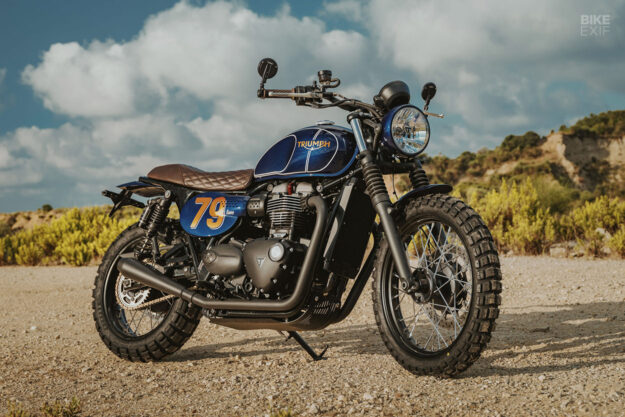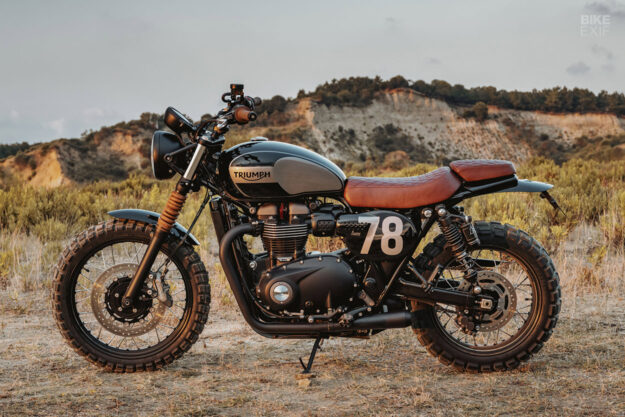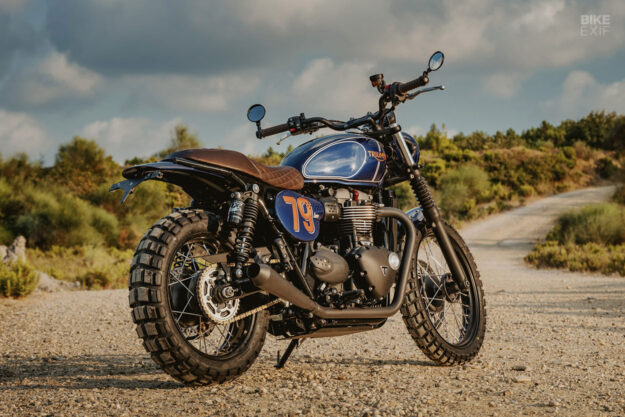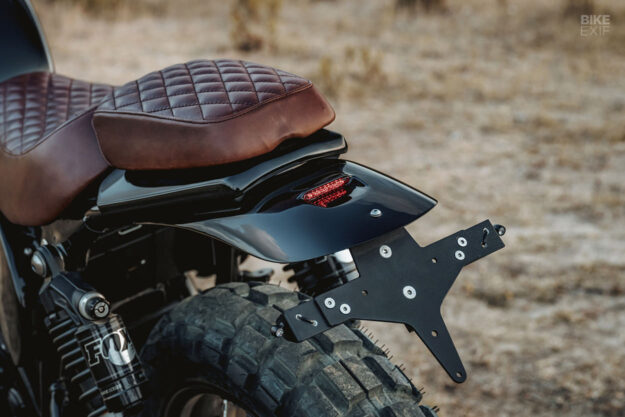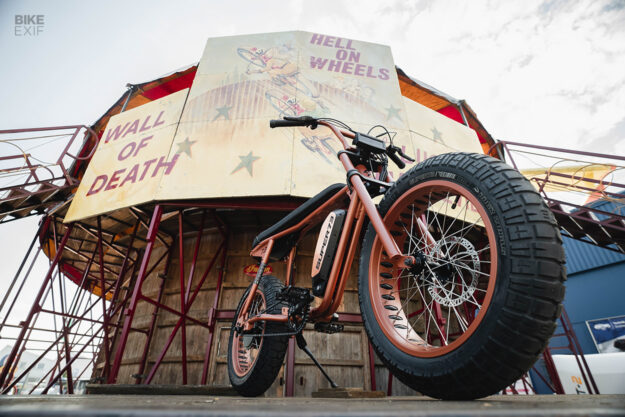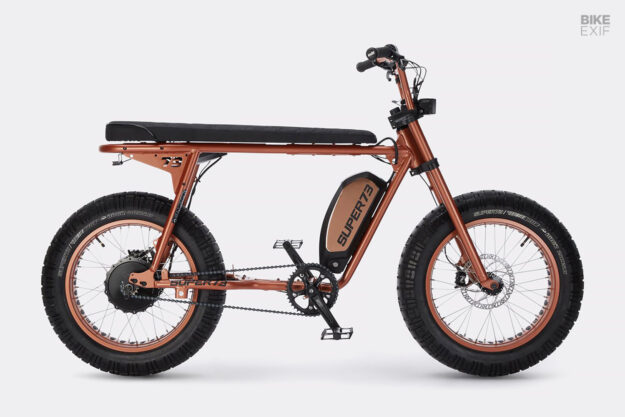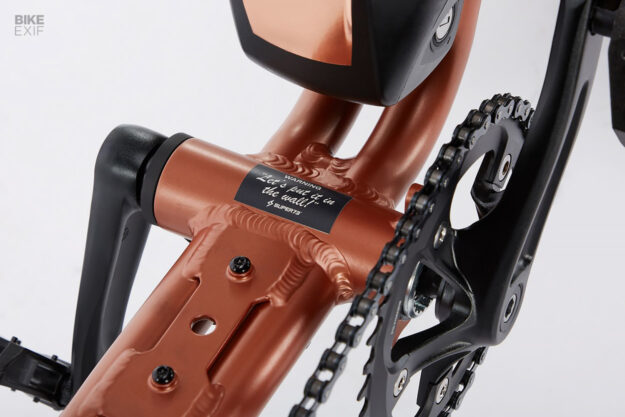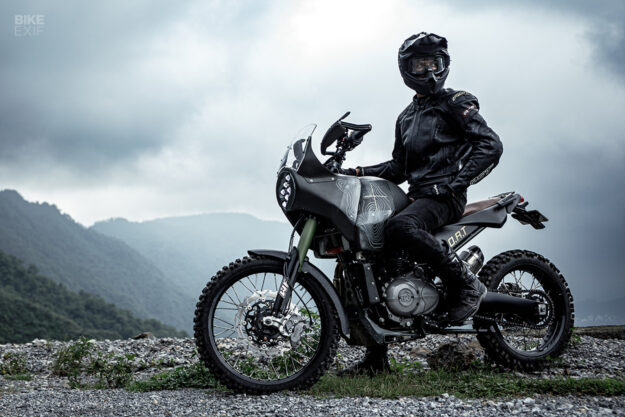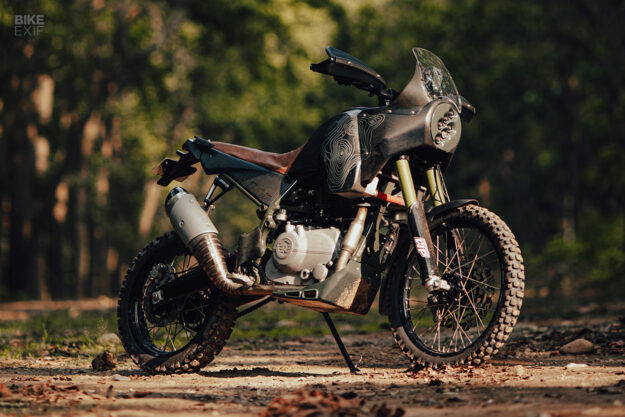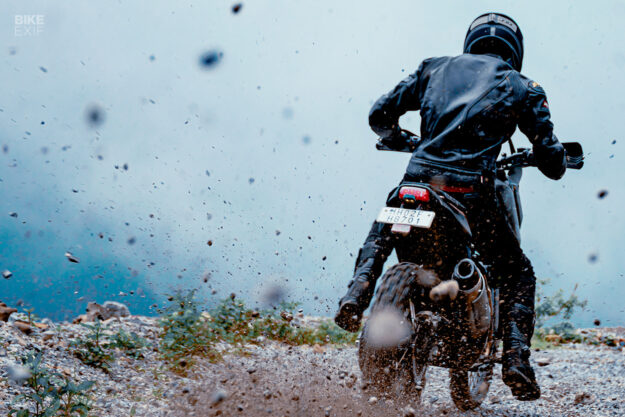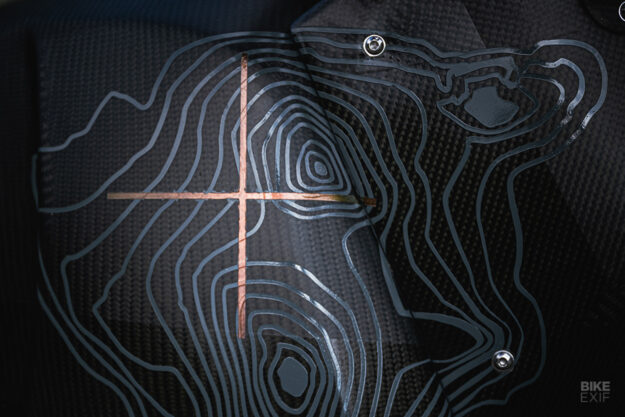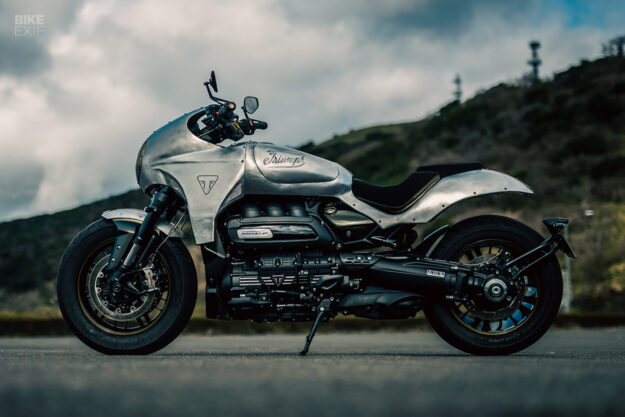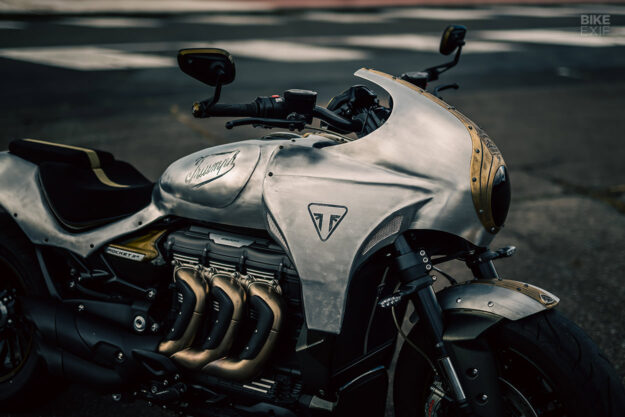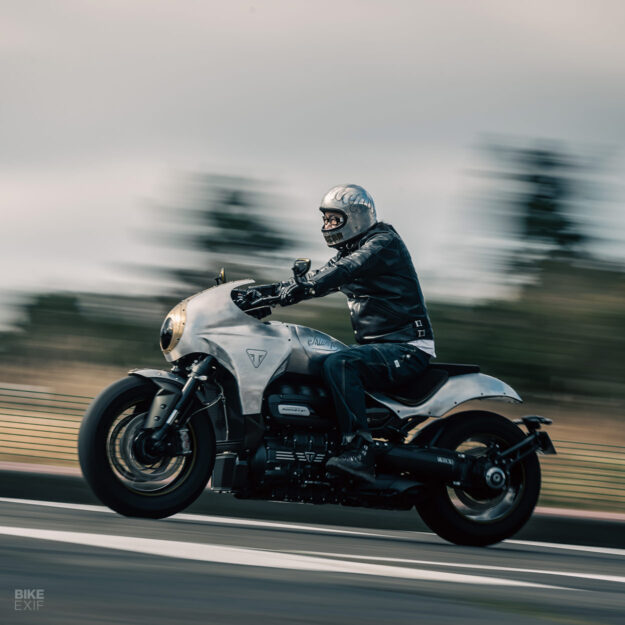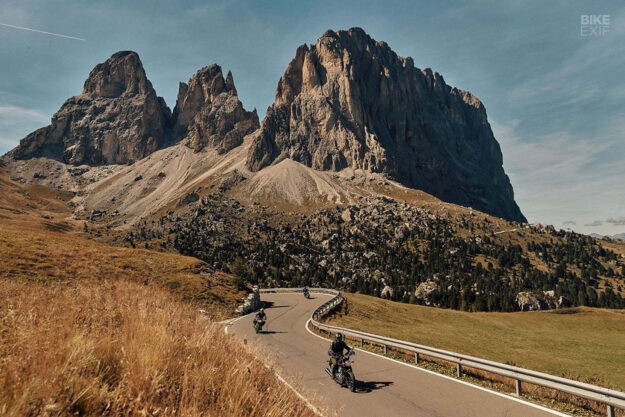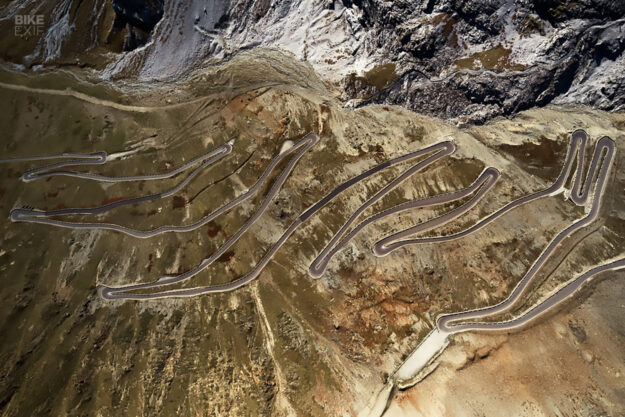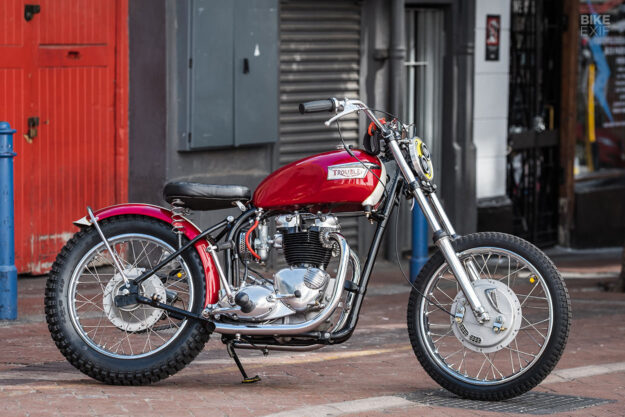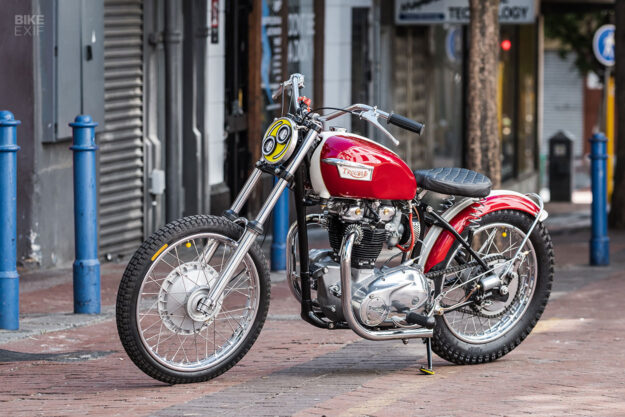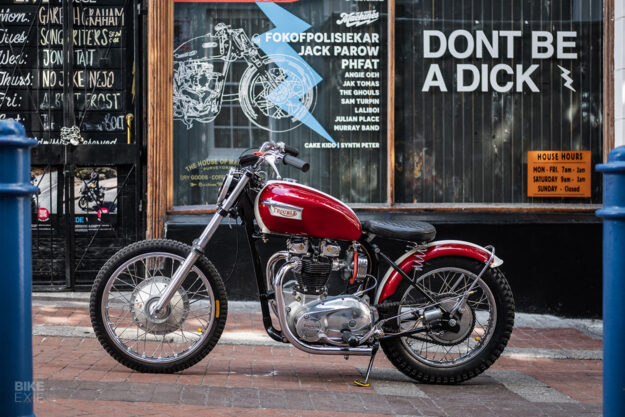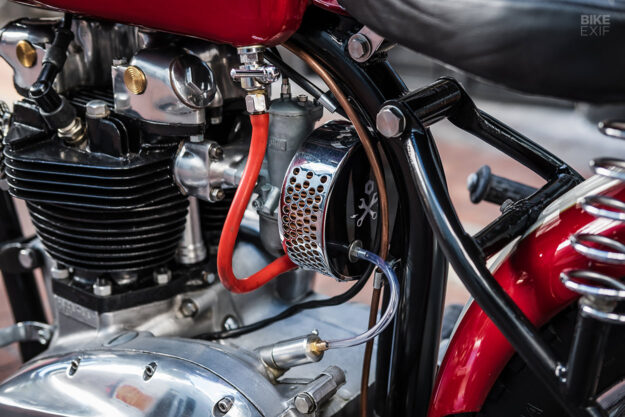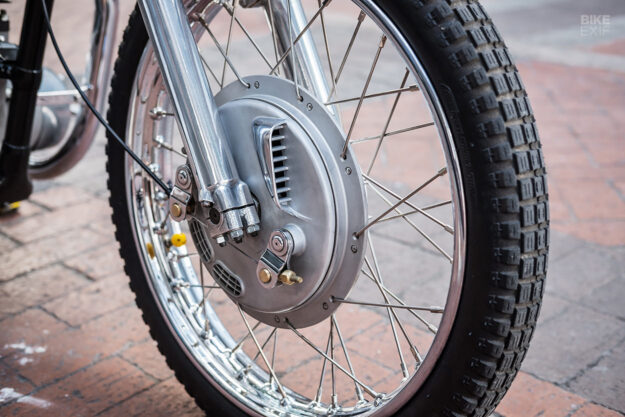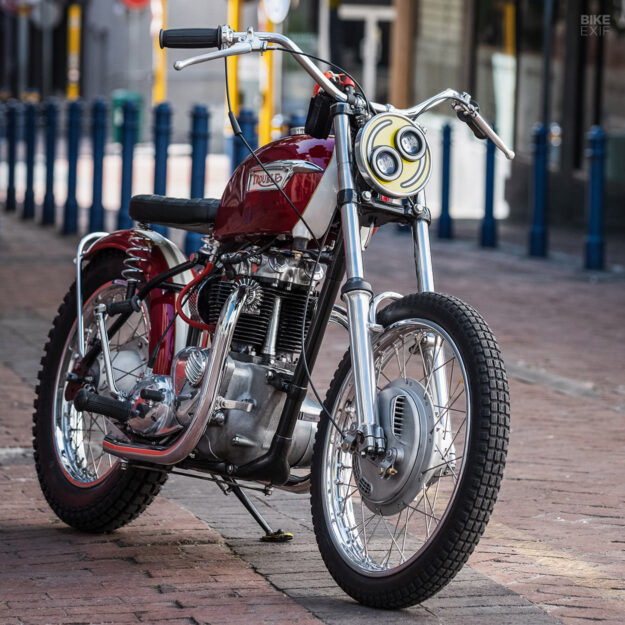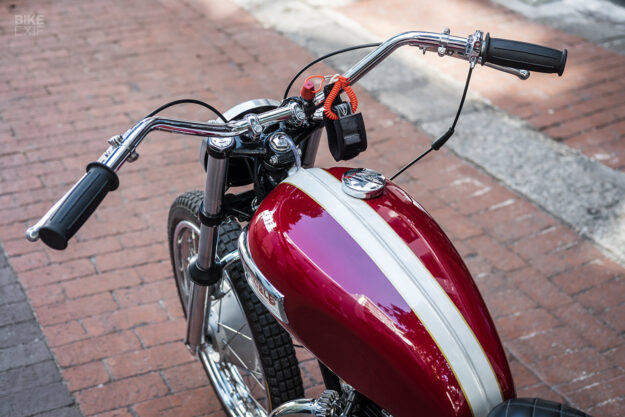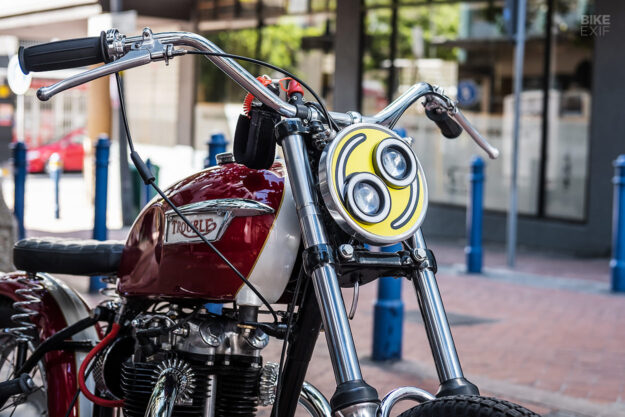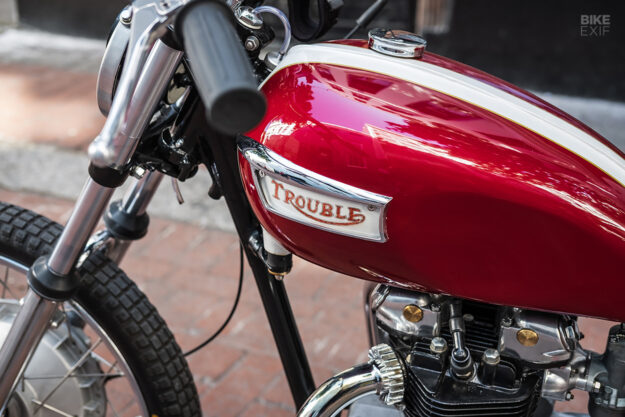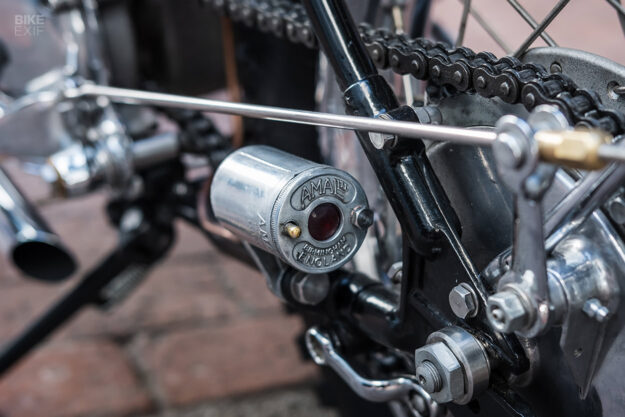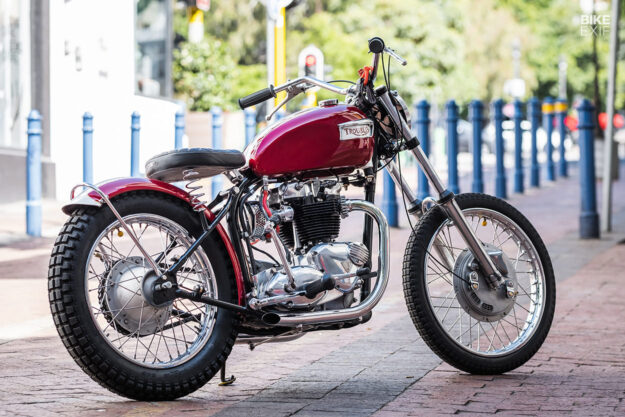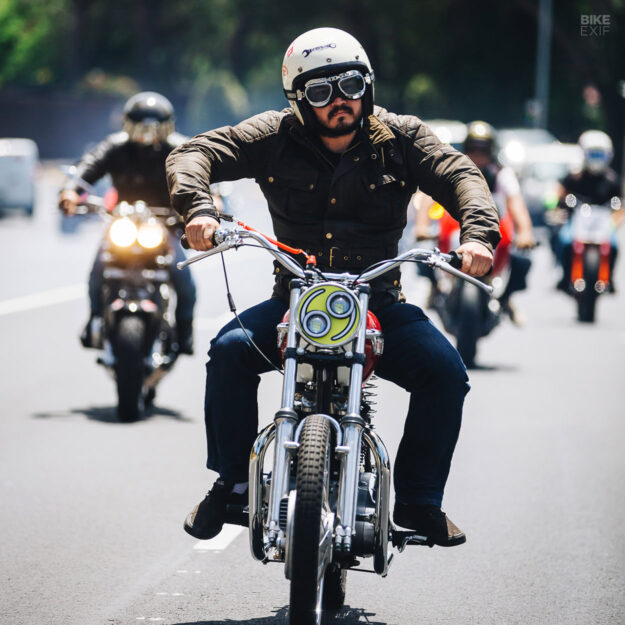Speed Read, December 11, 2022
Two thumpers lead the charge this week; a KTM 640 Duke from Spain and a Suzuki DR650 from Australia. We also take a look at the limited edition MV Agusta Tamburini Corse F43, and Heiwa MC’s latest Triumph.
KTM 640 Duke by Ønix Design In the KTM family, the 640 Duke is a bit of an ugly duckling. The dirt bike styling cues, road-friendly 17” wheels and awkward front-end design just don’t mesh. We’re sure it’s a hoot to ride—but the styling department was asleep on the day they designed the KTM 640 Duke.
Luckily Iñaki Bellver, a 30-year-old engineer from Valencia, Spain, could see the beauty that lay beneath.
For most, making the 640 look good would be a tall order, but not for Iñaki. In his spare time, he runs his own custom garage; Ønix Design. On the lookout for a bike to build a
street tracker with, Iñaki spied a 2000-model KTM Duke 640 for sale, and got to work.
The factory cast wheels were tossed in favor of custom 17” spoked hoops, shod with Mitas tires. The dirt bike-style suspension was dialed back, with the front end swapped for USD forks from an Aprilia RS. Stiffer springs and custom fork yokes were also fitted. The flat track front number plate is custom, and was laser cut from aluminum.
The tank was sourced from an old Rieju TT505 and looks incredible, especially with a fresh coat of BMW metallic grey paint. To contrast the gloss tank, the rest of the bike was painted in textured matte black. A single-piece flat track-style seat (with quick release mechanism) was made from forged carbon, and perched on a custom subframe.
The dashboard was shrunk down to just a single Motogadget gauge, with a gear indicator and LED warning lights. Easton handlebars and riser clamps were fitted, along with a scrambler-style mirror, and a new radial IRC master cylinder for the front brakes.
The engine breathes easily through a new DNA filter, a custom stainless steel exhaust, and a titanium muffler from Arrow. Iñaki wanted to keep riding the KTM on the road, so he fitted the most minimal lighting he could, opting for a full LED setup.
“The bike has a great power to weight ratio, with a much lower and aggressive riding position, so it’s super fun to ride,” beams Iñaki. “With the proportions and incredibly loud noise, it turns heads!”
This isn’t the first time Iñaki has graced BikeEXIF’s pages… and we’re sure it won’t be the last. [
Ønix Design | Images by
Juan Llobell]
Suzuki DR650 by Purpose Built Moto Australia’s Purpose Built Moto is back—this time with an adventure bike-cross-street tracker. The customer (who has commissioned PBM bikes in the past) wanted a stripped-back street tracker that could also tackle long-distance adventures. Tom Gilroy, head honcho at Purpose Built Moto, was keen to take on the challenge.
The base bike? A brand new, last-of-its-kind
Suzuki DR650.
“When you buy one tool to do two jobs, you end up with what we call a ‘shammer’,” explains Tom. “You can use the tool as a shovel but you can also use it as a hammer. However, it does both of those jobs pretty poorly.”
Don’t let Tom’s self-deprecating humor fool you though—this DR650 is a genuine Swiss army knife. In just 20 minutes, the bike can be transformed from a minimalist street tracker, to a kitted-out adventure machine.
The svelte rear end is where most of the magic happens. The adventure kit includes a pannier rack, and a rear fender that doubles as a 6 liter [1.6 gallon] auxiliary fuel tank, with a quick-connect fitting. Specced with a RotoPax fuel cell and a Kriega pannier, this bike can go a long way before needing to stop.
The bike also comes with two sets of wheels. The first set is the DR650’s standard 21F/17R pairing, with Pirelli MT21 off-road tires. The second set uses gold Excel-rimmed street wheels, with 17” Pirelli Scorpion Rally STR tires.
The front fender can be adjusted up or down, depending on which wheels are fitted. Sitting above it is a custom headlight setup, courtesy of the PBM workshop.
The tank is from a Honda CB550 that was severely rusted out. The PBM team chose to repair rather than replace it, and while they were at it, they fitted a Motogadget speedo to it. The seat and side covers are also custom.
To give the old DR a bit more pep, a Yoshimura RS-4 was retrofitted, along with a custom bracket and link pipe. The carb received a stage two performance kit, with the fueling kinks worked out after a bit of tuning.
Bulletproof reliability, purposeful good looks and a huge dollop of versatility. We love it. [
Purpose Built Moto]
MV Agusta Tamburini Corse F43 Many years ago, at the start of my motorcycling pursuit, I saw a bike that stopped me in my tracks. It was red and silver, with a single-sided swingarm and four mufflers sticking out from under the seat. It was an MV Agusta F4.
Originally designed by Massimo Tamburini, the MV Agusta F4 series was produced from 1999 to 2018. Along with the Ducati 916 and a slew of Bimotas, the inline-four MV Agusta was one of Tamburini’s most famous creations.
To commemorate the 25th anniversary of the F4, MV Agusta is teaming up with Massimo’s son, Andrea Tamburini, to release this: the MV Agusta Corse F43 Tributo. The new F43 looks almost identical to its predecessor, but eagle-eyed F4 fans will note the subtle differences—like the addition of rear wings on the tail. The new design is slightly more angular and aggressive than the original too, but that’s not a bad thing.
There are only going to be 25 bikes produced, with five colors available; Tamburini, Veltro, Serie Oro, Mamba and Viper. If we had our choice, we’d go for the F43 Serie Oro. Hopefully (judging by previous Serie Oro models) it will have the ubiquitous red and silver two-tone paint and gold wheels… delicious.
If you’d like to be one of the 25 lucky few, best get in touch with your MV Agusta dealer, pronto. [
Source | Images from Andrea Tamburini on
Facebook]
Triumph Thunderbird by Heiwa MC Kengo Kimura, founder of
Heiwa Motorcycle, is known the world over. Operating from Hiroshima in Japan, Heiwa bikes are so gloriously fantastic that Kimura-san has become a familiar face at the prestigious Yokohama Hot Rod Custom show.
People wait with bated breath for the next Heiwa bike, and it’s easy to see why. To top it all off, he’s one of the nicest guys you’ll ever meet.
This is Heiwa’s latest build, named ‘Seven Star 7.’ It’s a 1954 Triumph 6T Thunderbird, but very little of the original bike remains. The frame is completely custom, as is the gorgeous hand-formed aluminum bodywork. The slim tank and tail are quintessentially ‘Heiwa,’ but also entirely unique.
The seat and side covers are also custom, and if that swingarm looks too long to be factory Triumph, then you have a good eye. It’s another handmade item, suspended by MDI Lowdown shocks that were specifically designed for this bike.
Chunky Continental tires were mounted on fresh 18” rims, with modest-sized brakes fitted to the custom hubs. A vintage set of Paioli forks were adapted to custom fork clamps, to keep the front end as narrow as possible. Kimura-san also made the headlight and front fork brace and fitted a Motogadget speedo to the bars, tucked into a custom-made housing.
The engine, which is a work of art in itself, was torn down and completely rebuilt. Fueling is prepared by way of a new Mikuni VM32 carburetor, sucking in air through a hand-tuned velocity stack. To top it all off, Kimura-san built a new exhaust from scratch, with an unusual, but gorgeous, split-design muffler.
As we’ve come to expect from Kengo, there are so many good details on this machine, that we could spend hours poring over it. The whole thing just screams quality craftsmanship, but in a subtle way (if a scream can be subtle). Finished in mustard-yellow with polished details, this is up there with some of the best Heiwa builds of all time. [
Source]
Continue reading...
























































































